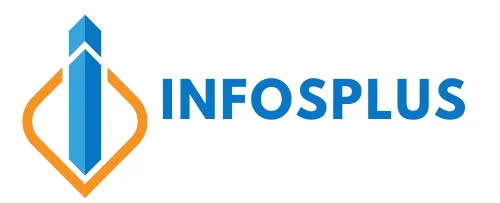Hijama, also known as cupping, is an ancient healing technique practiced for centuries in various cultures around the world. It involves creating suction on the skin using cups of glass or bamboo. This suction is to stimulate blood flow, improve circulation, and promote healing. While hijama is a traditional medicine, it has also gained popularity in recent years as a complementary therapy.
How Hijama Works
The process of hijama involves the following steps:
- Preparation: The area to be treated is cleaned and prepared with a lubricant or oil.
- Cupping: The cups are heated and placed on the skin, creating a vacuum. The heat causes the air inside the cups to expand, creating suction.
- Suction: The suction draws blood to the surface of the skin, which is then released.
- Aftercare: The area is cleaned and bandaged, and the patient is given instructions for aftercare.
Benefits of Hijama
Hijama offer a variety of benefits, including:
- Pain relief: Hijama treats chronic pain conditions, such as arthritis, back pain, and headaches. The suction is to help reduce inflammation and improve blood flow to the affected area.
- Improved circulation: By drawing blood to the surface of the skin, hijama can help improve circulation and promote healing. This can be beneficial for conditions such as cold hands and feet, and can also help to reduce the risk of blood clots.
- Stress reduction: Hijama have a relaxing effect on the body and mind. This can help to reduce stress and anxiety, and improve overall well-being.
- Skin health: Hijama can help to improve skin health by stimulating blood flow and promoting cell renewal. This can help to reduce the appearance of scars, wrinkles, and other skin problems.
- Boosted immune system: Hijama is to help to boost the immune system by stimulating the production of white blood cells. This can help to protect the body from illness and disease.
Types of Hijama
There are several different types of hijama, each with its own unique benefits:
- Wet hijama: This involves making small incisions in the skin before applying the cups. The suction draws blood to the surface, which is then released.
- Dry hijama: This does not involve making any incisions. The suction is applied directly to the skin.
- Static hijama: The cups are left in place for a period of time, allowing the suction to work on the area.
- Sliding hijama: The cups are moved across the skin, stimulating blood flow and promoting healing.
Hijama and Modern Medicine
While hijama is a traditional practice, it has also gained interest in recent years as a complementary therapy. Some studies have shown that hijama may be effective for treating certain conditions, such as chronic pain and osteoarthritis. However, more research to fully understand the benefits and risks of this practice.
Safety Considerations
Hijama is a safe procedure when performed by a qualified practitioner. However, there are some risks, such as bruising, bleeding, and infection. It is important to choose a practitioner who is knowledgeable about the procedure.
Skillset of a Hijama Practitioner
A skilled hijama practitioner possesses a unique combination of knowledge, skills, and experience that enables them to provide safe and effective treatments. Here are some of the key skills and qualities that a hijama practitioner should possess:
Knowledge and Understanding:
- Anatomy and Physiology: A deep understanding of human anatomy and physiology is essential for identifying the correct points for cupping and understanding the underlying causes of various health conditions.
- Pathology: Knowledge of common diseases and their symptoms is crucial for determining appropriate treatment plans and identifying potential contraindications.
- Traditional Medicine: A strong foundation in traditional medicine, including the principles of humoral balance and energy flow, is necessary for understanding the underlying philosophy of hijama.
Practical Skills:
- Cupping Techniques: Proficiency in various cupping techniques, including wet and dry cupping, static and sliding cupping, is essential for providing effective treatments.
- Pressure Point Identification: The ability to accurately identify and apply pressure to specific acupuncture points is crucial for maximizing the benefits of hijama.
- Sterilization and Hygiene: Adherence to strict sterilization and hygiene protocols is essential to prevent the spread of infections and ensure patient safety.
Soft Skills:
- Communication: Effective communication skills are essential for building rapport with patients, understanding their needs, and providing clear instructions for aftercare.
- Empathy and Compassion: A compassionate and empathetic demeanor is crucial for creating a comfortable and supportive environment for patients.
- Professionalism: A hijama practitioner should maintain a high level of professionalism, including punctuality, respect for patients, and adherence to ethical standards.
Additional Skills:
- First Aid: Basic first aid knowledge is essential for handling any adverse reactions or complications that may arise during treatment.
- Cultural Sensitivity: If working in a multicultural environment, it is important to be culturally sensitive and respectful of different beliefs and practices.
By possessing these skills and qualities, a hijama practitioner can provide safe, effective, and compassionate care to their patients.
Conclusion
Hijama is a fascinating and is an ancient healing practice to treat a variety of conditions. While more research to fully understand its benefits and risks is being done. Many people believe that hijama can be an effective way to improve health and well-being. If you are considering trying hijama, it is important to do your research and choose a qualified practitioners



More Stories
Boost Your Business with Digital Standees in Hyderabad
Mosquito Mesh Doors: Smart Home Investment for Protection
Celebrate Christmas in the Philippines